Discover Career Opportunities in Pharmacovigilance and Drug Safety
What do pharmacovigilance and drug safety do?
Pharmacovigilance and drug safety experts play a crucial role in monitoring and evaluating the safety of pharmaceutical products. They collect and analyze data on adverse drug reactions, assess the risks and benefits of medications, and ensure compliance with regulatory requirements. This work helps safeguard public health by identifying and mitigating potential risks associated with medications.
What are the duties associated with the roles of pharmacovigilance and drug safety professionals?
Duties associated with the roles of pharmacovigilance and drug safety professionals include:
- Adverse Event Monitoring: Collecting, reviewing, and evaluating reports of adverse drug reactions (ADRs) from healthcare professionals and patients.
- Signal Detection: Identifying potential safety concerns or emerging trends related to specific drugs or drug classes.
- Risk Assessment: Assessing the risks and benefits of pharmaceutical products, including conducting benefit-risk assessments.
- Regulatory Reporting: Preparing and submitting regulatory reports of adverse events to health authorities, ensuring compliance with regulatory requirements.
- Safety Database Management: Maintaining and updating safety databases to track and document adverse events.
- Clinical Trial Safety: Monitoring the safety of participants in clinical trials and ensuring protocol compliance.
- Safety Labeling: Collaborating with regulatory affairs teams to update drug labeling with safety information.
- Risk Minimization: Developing and implementing risk minimization strategies, such as Risk Evaluation and Mitigation Strategies (REMS).
- Safety Communication: Communicating safety information to healthcare professionals, patients, and regulatory agencies.
- Post-Marketing Surveillance: Continuously monitoring the safety of approved drugs in the market.
- Periodic Safety Reports: Preparing and submitting periodic safety reports, such as Periodic Safety Update Reports (PSURs) or Periodic Benefit-Risk Evaluation Reports (PBRERs).
- Quality Assurance: Ensuring compliance with standard operating procedures (SOPs) and quality control measures in pharmacovigilance activities.
- Pharmacovigilance Audits: Conducting internal audits or participating in external audits to assess compliance with regulatory standards.
- Pharmacovigilance Training: Providing training and guidance to staff on pharmacovigilance processes and regulations.
- Drug Safety Surveillance Systems: Implementing and managing systems for the continuous monitoring of drug safety.
- Advisory Role: Offering expert guidance and recommendations to product development teams, regulatory affairs, and other stakeholders.
- Collaboration: Collaborating with cross-functional teams, including regulatory affairs, medical affairs, and clinical research, to ensure a comprehensive approach to drug safety.
These duties are essential for ensuring the safety and effectiveness of pharmaceutical products throughout their lifecycle, from development and clinical trials to post-marketing surveillance. Pharmacovigilance and drug safety professionals play a critical role in protecting public health and regulatory compliance.
What are the average salaries for pharmacovigilance and drug safety professionals in US?
Average Base Salary
$128,700
Per Year
The average salary for pharmacovigilance and drug safety professionals is $128,700 per year in the United States.
Frequently Asked Questions about pharmacovigilance and drug safety
Project Management and Support salary in the United States
Average Base Salary
$128,700
Per Year
The average salary for project management and support is $128,700 per year in the United States.
Salary satisfaction
Based on 4 ratings
50% of Pharmacovigilance Managers in the United States think their salaries are enough for the cost of living in their area.
How to Become a Pharmacovigilance and Drug Safety Professional
To become a pharmacovigilance and drug safety professional, follow these steps:
- Educational Foundation:
- Obtain a bachelor’s degree in pharmacy, medicine, life sciences, nursing, or a related field.
- Consider pursuing a master’s degree (e.g., MPH) or postgraduate diploma in pharmacovigilance for specialized training.
- Pharmacovigilance Knowledge:
- Gain a deep understanding of pharmacovigilance principles, regulations, and best practices.
- Regulatory Understanding:
- Familiarize yourself with pharmaceutical regulations and guidelines, such as ICH, FDA, EMA, and local regulatory authorities.
- Drug Development Process:
- Learn about the drug development lifecycle, including clinical trials, regulatory submissions, and post-marketing surveillance.
- Safety Database Management:
- Acquire skills in using pharmacovigilance databases and tools for adverse event reporting and safety assessments.
- Adverse Event Assessment:
- Develop expertise in evaluating and classifying adverse events and assessing causality.
- Reporting Requirements:
- Understand the regulatory reporting requirements for adverse events and safety data.
- Risk Management:
- Learn risk management strategies, including Risk Evaluation and Mitigation Strategies (REMS).
- Medical Terminology:
- Familiarize yourself with medical terminology and clinical trial documentation.
- Soft Skills:
- Enhance communication, attention to detail, and problem-solving skills, as these are essential in pharmacovigilance roles.
- Certifications:
- Consider pursuing relevant certifications such as the Certified Pharmacovigilance Professional (CPP) or the RAPS Regulatory Affairs Certification (RAC).
- Internships and Experience:
- Seek internships or entry-level positions in pharmacovigilance or related roles to gain practical experience.
- Networking:
- Build a professional network by attending pharmacovigilance conferences, joining industry associations, and connecting with mentors.
- Continuous Learning:
- Stay updated with evolving regulations, pharmacovigilance methodologies, and industry trends through ongoing education and professional development.
- Ethical Conduct:
- Uphold ethical standards and confidentiality when handling sensitive pharmacovigilance data.
By following these steps and continually improving your knowledge and skills, you can embark on a rewarding career in pharmacovigilance and drug safety, contributing to public health and the safe use of pharmaceutical products.
What skills help pharmacovigilance and drug safety professionals find jobs?
Skills that can help pharmacovigilance and drug safety professionals find jobs include:
- Regulatory Knowledge: Understanding of pharmaceutical regulations and guidelines, such as ICH, FDA, and EMA.
- Pharmacovigilance Expertise: Proficiency in pharmacovigilance principles, adverse event reporting, and safety assessment.
- Database Management: Skills in using pharmacovigilance databases and software for data management and reporting.
- Risk Assessment: Ability to assess and manage risks associated with pharmaceutical products.
- Clinical Trial Understanding: Knowledge of the drug development process, clinical trial phases, and clinical documentation.
- Communication Skills: Effective written and verbal communication for regulatory reporting and collaboration with cross-functional teams.
- Attention to Detail: Precision in reviewing and classifying adverse events and safety data.
- Problem-Solving: Critical thinking to analyze complex safety issues and recommend solutions.
- Medical Terminology: Familiarity with medical terminology and clinical trial documentation.
- Soft Skills: Strong teamwork, adaptability, and the ability to work in a multidisciplinary environment.
- Certifications: Relevant certifications, such as Certified Pharmacovigilance Professional (CPP) or RAPS Regulatory Affairs Certification (RAC), can enhance job prospects.
- Ethical Conduct: Commitment to upholding ethical standards and maintaining confidentiality in pharmacovigilance activities.
- Continuous Learning: Staying updated with evolving regulations and pharmacovigilance methodologies through professional development and education.
- Networking: Building a professional network within the pharmaceutical industry to access job opportunities and career growth.
Demonstrating these skills, whether through education, certifications, or practical experience, can make pharmacovigilance and drug safety professionals highly sought-after in the industry.
All Jobs: 16
Found Jobs: 16
Business Analyst
Location: Dover, DE [Hybrid]
Business Analyst
Location: New Castle, DE [Remote]
SAP CM (Commodity Management) Functional Consultant
Location: [On-Site]
SAP Functional Consultant
Location: [On-Site]
Analyst
Location: [Hybrid]
Lead Full Stack Java Software Engineer
Location: Wilmington, DE [Hybrid]

